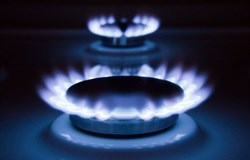Trending




 Sabre EMEA 2024 Awards: Razor PR, Retroviral top SA agenciesDanette Breitenbach
Sabre EMEA 2024 Awards: Razor PR, Retroviral top SA agenciesDanette Breitenbach
Elections 2024
LP Gas installation rules - not just hot air

George Davis, Head: Construction and Engineering at Risk Benefit Solutions (RBS), an independent insurance and risk specialists, says that failure by various organisations to actively manage the performance of the grid and to accurately predict the future pressure on its output, has led to staggering increases, and in turn, an upward trend of business and households making use of liquid petroleum gas (LP gas) as an alternative.
"LP gas is cheaper, more efficient and in some cases more environmentally friendly. It can, however, be very dangerous to use if not operated properly."
He says that the majority make use of gas in a closed system, eg. portable heaters and camping stoves. "Although dangerous to use, if used correctly and the gas storage is contained, they are fairly safe. It is however the open systems, such as built-in stoves and fridges, that can be extremely dangerous if not installed correctly."
Davis provides a few aspects of the above regulation to ensure that businesses and consumers are aware of the legal requirements when installing gas:
Installation rules
Gas bottles may not be installed:
- Less than 1 meter sideways from doors and windows;
- Less than 2 meters from drains and air vents or any other place where the gas can gather if the bottle leaks;
- Less than 3 meters below windows unless a non-combustible roof is installed between the gas bottles and the bottom of the window;
- Less than 1 meter from the property boundary wall unless it is a fire wall, at least 1.8 meters tall and there are no ventilation gaps in the wall (It is however acceptable if no more than two 48kg bottles are stored);
- Less than 3 meters from the property boundary wall (if more than two 48kg bottles are stored);
- Less than 5 meters sideways away from a switchable electrical point or plug switch;
- Light bulbs cannot be less than 1.5 meters above a gas bottle.
Other installation rules:
- Only class 1 or 2 copper pipes, or other approved gas piping, may be used (Note: This is not the same copper piping as used by plumbers);
- Copper pipes going through a wall must be sleeved;
- Approved flexible gas hose may not be more than 2 meters long and may not go through any partition (including wood, dry wall, cupboard wall etc.);
- Request a Certificate of Conformity for Gas Appliances: The Machinery and Occupational Safety Act of 1993 require owners of buildings to hold a certificate of compliance in respect of any electrical installation. This has now also been extended to include a compliance certificate of conformity of gas installations.

